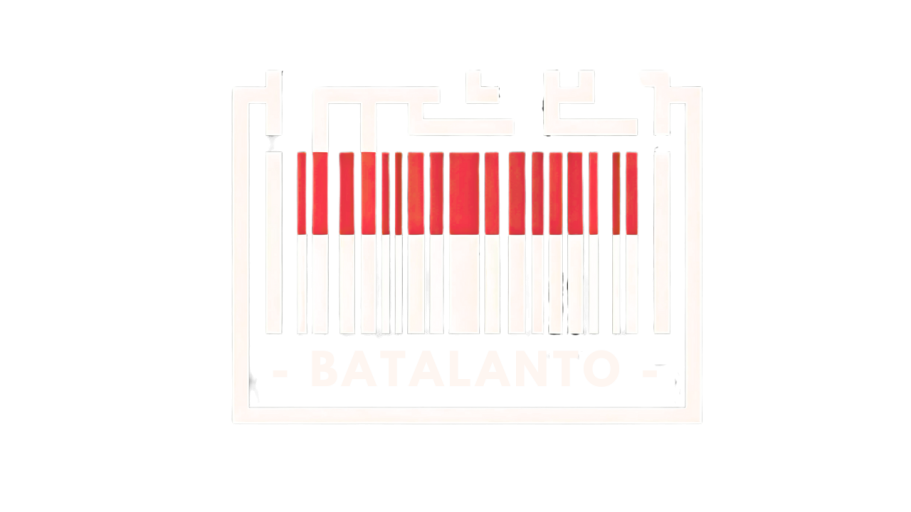Chemsex
When it comes to Chemsex, the term often refers to the use of various substances during sexual activity, commonly in the context of the gay community. These substances can range from drugs like crystal meth or GHB (gamma-hydroxybutyrate), which are used to enhance sexual experiences and facilitate long, intense sessions. The allure of these substances is often the perceived ability to amplify pleasure, reduce inhibitions, and prolong sexual encounters. While the use of these substances can create heightened sensations and deeper connections for some people, it’s essential to understand the risks and how to engage with them responsibly.
Crystal meth, for example, is known for its powerful stimulant effects, providing an intense rush of euphoria and increased stamina. This can make it highly appealing to some within the gay community, where it may be used during group sex or “party and play” sessions. However, this substance can lead to physical and psychological dependence, as well as serious long-term health consequences like heart problems, anxiety, and cognitive issues. If you’re using or considering using crystal meth in your sexual experiences, it’s important to stay mindful of the impact on your health and mental well-being. One piece of advice here would be to always ensure you’re hydrated and eating properly to avoid the physical depletion that can come with prolonged stimulant use. Always have a trusted friend or buddy to check in with, especially if you’re engaging in extended sessions.
Set your limits
t’s important to recognize that while these substances can seem like a way to enhance the experience, they come with potential dangers that should never be overlooked. As someone who understands the appeal of Chemsex, it’s important to approach it with responsibility. If you’re using these substances, consider having a harm-reduction plan in place. This includes setting limits, knowing your body, keeping an eye on the time, and always prioritizing your health. Be mindful of your choices, stay safe, and never hesitate to reach out for support if you need it. Empowering yourself with knowledge is the best way to make informed decisions.
Please remember, I’m not a doctor, but I am a community member trying to provide helpful insights. Always seek professional advice if you’re concerned about your use of any substances.
Chemsex
Introduction and Contextual Overview
Chemsex—a term used to describe the use of drugs like crystal meth, GHB/GBL, or ketamine during sexual activity—is a phenomenon that has grown in prevalence, particularly in gay and queer communities. For many, chemsex can feel like a way to connect, enhance intimacy, or escape personal struggles. But for others, it becomes a cycle of addiction, shame, and harm, impacting their mental health, relationships, and overall well-being.
Chemsex is often misunderstood or stigmatized, even within LGBTQ+ spaces, making it difficult for those struggling to seek support. It’s essential to understand that chemsex addiction is not a moral failing—it’s a complex issue shaped by societal pressures, trauma, and mental health struggles. This article aims to break the stigma, provide an empathetic exploration of chemsex addiction, and offer pathways toward recovery and hope.
What Is Chemsex?
Chemsex refers to the intentional use of drugs to facilitate or enhance sexual experiences. The substances most commonly associated with chemsex include:
- Crystal Methamphetamine (Meth): Increases energy, libido, and euphoria.
- GHB/GBL (Gamma-Hydroxybutyrate): A depressant that lowers inhibitions and enhances pleasure.
- Ketamine: A dissociative anesthetic that can induce relaxation or out-of-body experiences.
The effects of these drugs can intensify sexual sensations, lower inhibitions, and prolong sessions, sometimes lasting for hours or even days. While some engage in chemsex occasionally without long-term harm, for many, it becomes an addictive cycle that’s hard to break.
Why Is Chemsex Prevalent in Gay Communities?
Chemsex is uniquely tied to the LGBTQ+ experience, shaped by societal, cultural, and historical factors:
- A Legacy of Trauma: For many gay men, rejection, discrimination, and internalized homophobia create a deep sense of shame. Drugs can temporarily numb these feelings, offering a sense of escape or empowerment.
- A Desire for Connection: In spaces where sexual expression is often celebrated, chemsex can feel like a way to bond, connect, and belong. The use of substances can blur emotional boundaries, creating a false sense of intimacy.
- Hookup Apps and Chemsex Culture:
Apps like Grindr have made it easier to find not only sexual partners but also access to drugs. Terms like “PnP” (party and play) or emojis signaling drug use normalize chemsex in certain social circles. - HIV and Risk-Taking Behavior: For some, the fear and stigma surrounding HIV may fuel a sense of fatalism, leading to riskier sexual and drug-related behaviors. Others may use chemsex to cope with living with HIV, further complicating their mental health.
How Chemsex Addiction Progresses
The cycle of chemsex addiction often mirrors other forms of addiction, but its overlap with sexual behavior makes it particularly complex:
- Initial Experimentation:
Drugs are introduced during sexual encounters, often as a way to enhance pleasure or overcome inhibitions. - Increasing Reliance:
Over time, individuals may find it difficult to enjoy sex—or even feel desirable—without the use of drugs. - Escalation:
The frequency and intensity of chemsex sessions increase, often leading to physical, mental, and social consequences. - Loss of Control:
Addiction takes hold, with individuals feeling unable to stop using despite harm to their health, relationships, and daily functioning.
Signs and Symptoms of Chemsex Addiction
Recognizing chemsex addiction can be challenging, especially because it intertwines drug use with sexual behavior. Common signs include:
Emotional Symptoms:
- Feeling shame or regret after chemsex sessions.
- Using drugs to escape emotional pain or anxiety.
- Increased feelings of isolation or loneliness.
Physical Symptoms:
- Weight loss, fatigue, or sleep deprivation from prolonged sessions.
- Increased risk of sexually transmitted infections (STIs), including HIV.
- Symptoms of withdrawal, such as anxiety, depression, or tremors.
Behavioral Symptoms:
- Neglecting responsibilities, work, or relationships to engage in chemsex.
- Difficulty having sober sex or enjoying intimacy without drugs.
- Using hookup apps to seek out chemsex-specific encounters.
The Impact of Chemsex Addiction
The consequences of chemsex addiction extend beyond the physical and can deeply affect mental health, relationships, and quality of life:
Health Risks:
- Increased risk of STIs, including hepatitis C and HIV, due to unprotected or prolonged sexual activity.
- Overdose risks, particularly with substances like GHB, where dosage can be difficult to control.
- Long-term damage to the brain, liver, and heart from chronic drug use.
Mental Health Consequences:
- Depression, anxiety, and paranoia are common among individuals who engage in frequent chemsex.
- The cycle of shame and addiction can lead to low self-esteem and suicidal thoughts.
Social and Relationship Struggles:
- Chemsex addiction can erode trust and intimacy in relationships
- Many individuals withdraw from friends and family, leading to isolation.
Pathways to Recovery
Recovery from chemsex addiction is possible, but it requires a holistic approach that addresses both the physical addiction and the underlying emotional pain. Key steps include:
Seeking Professional Help:
- Addiction specialists or LGBTQ+-affirming therapists can help develop a personalized treatment plan.
- Medication-assisted treatment may be offered to manage withdrawal symptoms or cravings.
Therapy
- Cognitive Behavioral Therapy (CBT): Helps individuals identify triggers and build healthier coping mechanisms.
- Trauma-Informed Therapy: Many chemsex participants have experienced past trauma that needs to be addressed for recovery.
Support Groups:
- Programs like Narcotics Anonymous (NA) or Sex and Love Addicts Anonymous (SLAA) provide peer-led support.
- LGBTQ+-specific groups, such as those offered by organizations like Terrence Higgins Trust or GMFA, create safe spaces for discussion.
Building Sober Sexuality:
- Therapy can help individuals rediscover intimacy and sexual pleasure without the need for substances.
Exploring new ways of connecting with partners can rebuild confidence and trust.
Prevention and Harm Reduction
For individuals not ready to quit or who engage in occasional chemsex, harm reduction strategies can help reduce risks:
- Know Your Dosage: Especially with GHB, where small changes in dose can lead to overdose.
- Avoid Mixing Substances: Combining drugs like GHB with alcohol can be fatal.
- Test Regularly for STIs: Regular sexual health screenings can prevent long-term complications
- Carry Naloxone: In case of opioid use, naloxone can reverse an overdose.
- Use Support Apps: Resources like sober apps or health organizations can provide tips and connections to harm reduction services.
Special Considerations
Intersectional Challenges:
- Chemsex addiction may intersect with other forms of marginalization, such as racism, poverty, or living with HIV. These factors require culturally sensitive care to address fully.
Systemic Barriers:
- Stigma in healthcare settings often discourages LGBTQ+ individuals from seeking help. Advocacy for LGBTQ+-affirming addiction services is essential.
Reinforcing Empowerment
Chemsex addiction is not a reflection of personal failure—it’s a symptom of deeper struggles that can be healed. Seeking help is a courageous act, one that opens the door to recovery, healthier relationships, and greater self-awareness.
By breaking the silence and stigma around chemsex addiction, LGBTQ+ communities can foster spaces of compassion, understanding, and hope. Remember, recovery is possible, and support is always available. You are not alone, and your story doesn’t end here—it’s just the beginning of a healthier, more fulfilling life.
Practical Guidelines for Managing Chemsex When Your Friends Are Involved
Practical Guidelines for Managing Chemsex When Your Friends Are Involved
Finding yourself in a circle of friends who are involved in chemsex can feel isolating, especially if you’re trying to set boundaries or step away from it. It’s important to take control of your own choices and well-being while maintaining respect for your friendships. Here are practical strategies to help you navigate this challenging situation:
Understanding Your Boundaries
Before you take action, reflect on what you truly want for yourself.
- Ask Yourself: Why do I want to avoid or stop chemsex? Is it about health, mental well-being, or a desire for a different lifestyle?
- Define Limits: Decide what you’re comfortable with, such as not using certain drugs, not attending chemsex parties, or limiting interactions with friends only to sober activities.
Practical Steps
- Write down your boundaries to make them clear and tangible.
- Practice saying phrases like:
- I don’t want to join this weekend, but let’s catch up for coffee instead.
- I’ve decided to take a break from chemsex for my health.
Shifting Your Social Dynamics
It can feel daunting to change social patterns, but small steps can make a big difference.
- Suggest Alternatives: Propose sober activities like going to the gym, having a movie night, or exploring hobbies together.
- Broaden Your Circle: Join LGBTQ+ sports groups, community activities, or other social circles where chemsex isn’t a focus.
- Distance Gradually: If friends consistently pressure you to join chemsex activities, consider spending less time with them without making drastic cuts.
Practical Steps
- Schedule non-chemsex meetups with friends and take the lead in organizing.
- Use apps or local listings to find new sober events or LGBTQ+ social opportunities.
Developing Personal Control Mechanisms
Building habits and systems to hold yourself accountable can help you stay aligned with your goals.
Set Clear Goals: For example:
- I won’t attend chemsex events for the next 30 days.
- I’ll replace Friday night chemsex parties with a workout or Netflix night.”
Create Reminders: Use phone alarms or sticky notes with affirmations like, “I am stronger without chemsex.”
Limit Triggers: Delete apps or block profiles associated with chemsex invitations.
Practical Steps
- Use scheduling apps to plan your time, leaving less room for impulsive decisions.
- Make agreements with trusted friends or partners to help you stay accountable.
Managing Social Pressure
Dealing with peer pressure can be challenging, but preparing your responses can reduce anxiety.
- Have Polite Declines Ready: “Thanks, but I’m taking care of myself right now. “I’ve realized it’s not for me anymore, but I’m here to support you if you need to talk.
- Set Limits on Discussions: If the topic comes up too often, gently steer the conversation to other interests.
Practical Steps
- Practice saying “no” in a mirror or with a trusted friend to build confidence.
- Plan exit strategies for events, like leaving early if things turn uncomfortable.
Staying Occupied with Healthy Alternatives
Idle time can make it harder to resist joining chemsex activities. Keeping yourself busy and fulfilled helps shift focus.
- Find Hobbies: Rediscover activities you enjoy or try new ones like art, sports, or cooking.
- Exercise Regularly: Physical activity improves mental health and provides a productive way to channel energy.
- Volunteer or Get Involved: Join LGBTQ+ advocacy groups or community projects to meet like-minded people.
Practical Steps
Make a list of hobbies or goals you’ve always wanted to pursue and start small.
Schedule your days in advance to include self-care, exercise, and socializing.
Building a Support System
Surrounding yourself with supportive people can make a significant difference.
- Talk to Trusted Friends: Share your feelings and goals with friends who don’t pressure you.
- Seek Professional Support: Reach out to LGBTQ+-friendly therapists or support groups specializing in chemsex recovery.
- Find Online Communities: Join forums or social media groups focused on sober living or chemsex recovery.
Practical Steps
• Call or message a supportive friend when you feel tempted.
• Attend meetings like Narcotics Anonymous (NA) or other LGBTQ+ recovery groups.
Tracking Progress
Measuring your progress helps you stay motivated and focused.
- Journaling: Write daily about how you feel, what you’ve achieved, and what challenges you’ve faced.
- Set Rewards: Treat yourself for milestones, like a month without chemsex.
- Reflection: Periodically review your journal or calendar to see how far you’ve come.
Practical Steps
- Use apps like Habitica or Streaks to track progress and stay motivated.
- Celebrate small wins with positive rewards like a nice meal, a new book, or a self-care day.
Preparing for Challenges
Relapses or moments of doubt can happen, and that’s okay. What matters is how you respond.
- Have a Plan: Know what to do if you slip up, such as reaching out to a support network or journaling about what happened.
- Practice Self-Compassion: Avoid self-criticism and focus on getting back on track.
- Identify Triggers: Reflect on what led to the relapse and plan strategies to avoid it in the future.
Practical Steps
- Keep a list of emergency contacts, including trusted friends or support hotlines.
- Create a personal mantra to remind yourself of your strength and goals, like, “One mistake doesn’t define me.”
Final Thought
Choosing to distance yourself from chemsex, even if your friends are involved, is a powerful step toward prioritizing your well-being. It’s not about judging others but about respecting your own needs and values. Remember, it’s okay to take small steps and seek support along the way. Change is a process, not a race. Stay patient, stay kind to yourself, and celebrate every step forward.









